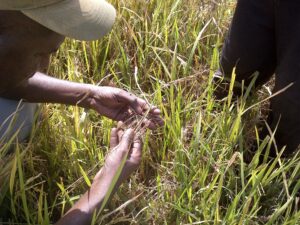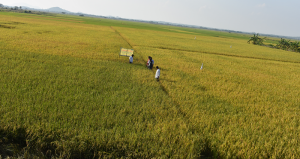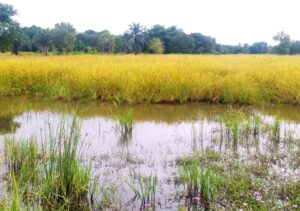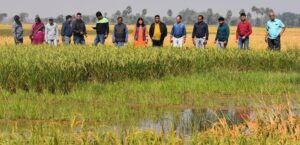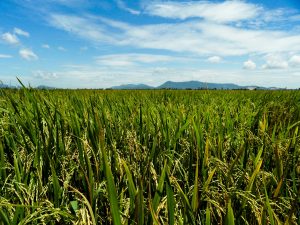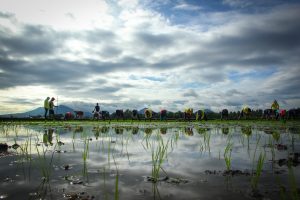
The temperate regions of the world lie between the Arctic Circle and Tropic of Cancer, and the Antarctic Circle and Tropic of Capricorn. Diverse climates are found within these regions depending on latitude, prevailing winds, mountain ranges, and oceanic influences. Map 1 superimposes areas where rice is cultivated,and then a simplified version of the classic Köppen- Geiger climate map shows the tropical, arid, temperate, and polar regions. The areas of rice cultivation are clearly split between the tropical and temperate areas of the world, although some cultivation is also seen in semiarid zones.
Drops in temperature during the key stages of rice’s growth can damage production output. For example, during the seedling stage, temperatures below 10–15 °C inhibit the establishment of seedlings and cause seedlings to rot; during the reproductive stage, temperatures below 18–19 °C can cause sterility. Because of this, cold-tolerant varieties are keenly sought after in temperate areas to boost yields and, in some cases, to allow farmers in the region to grow a second crop.

Note, however, that cold-tolerant varieties are required not only in areas of high latitude. The subtropics and tropical areas have zones of high altitude where rice cultivation also needs to endure cold temperatures. Map 2 highlights areas within the tropics that are above 1,500 meters.
Ethiopia is one of the countries in the tropics that has large areas of agricultural land at high altitudes. Rice was introduced only recently in Ethiopia—during the 1970s—yet demand has already soared to the extent that rice is now a “National Food Security Crop” (see Moving up in Ethiopia on pages 24-25 of Rice Today Vol. 7, No. 4). The highland plateau has high potential for rice production but its temperate climate means that coldtolerant varieties are required before this area can be considered for widespread rice cultivation (see Weathering the cold on pages 26-27 of Rice Today Vol. 9, No.1). The Ethiopian Highlands range from 1,500 to 4,550 meters, but a big percentage of the plateau is below 2,500 meters. The Highlands are the largest contiguous expanse of high altitude land in Africa. Temperatures at 1,500 meters during the rice planting months from March to June can go as low as 12 °C, as the climate chart for Gado demonstrates.

Map 3 is a perspective view of Ethiopia based on elevation data. We used data from the Shuttle Radar Topography Mission to create this visualization of Ethiopia’s dramatic terrain. We used a vertical exaggeration of the terrain and highlighted the agricultural areas in between, which are more than 1,500 meters above sea level, to reveal the Map 3 is a perspective view of Ethiopia based on elevation data. We used data from the Shuttle Radar Topography Mission to create this visualization of Ethiopia’s dramatic terrain. We used a vertical exaggeration of the terrain and highlighted the agricultural areas in between, which are more than 1,500 meters above sea level, to reveal the extensive highland temperate region that includes areas suitable for cold-tolerant rice.

Just how much of this area could be suitable and available for rice cultivation remains to be seen. The relatively flat expanses within the Ethiopian Highlands, the plentiful rainfall, and existing agricultural land, however, suggest that cold-tolerant rice would be beneficial in increasing Ethiopia’s rice production and improving food security.
_________________________________________
Dr. Nelson is a geographer, Mr. Rala is an associate scientist, Ms. Garcia is an associate graphic designer, and Ms. Asilo is a senior specialist in remote sensing in IRRI’s Social Sciences Division.

